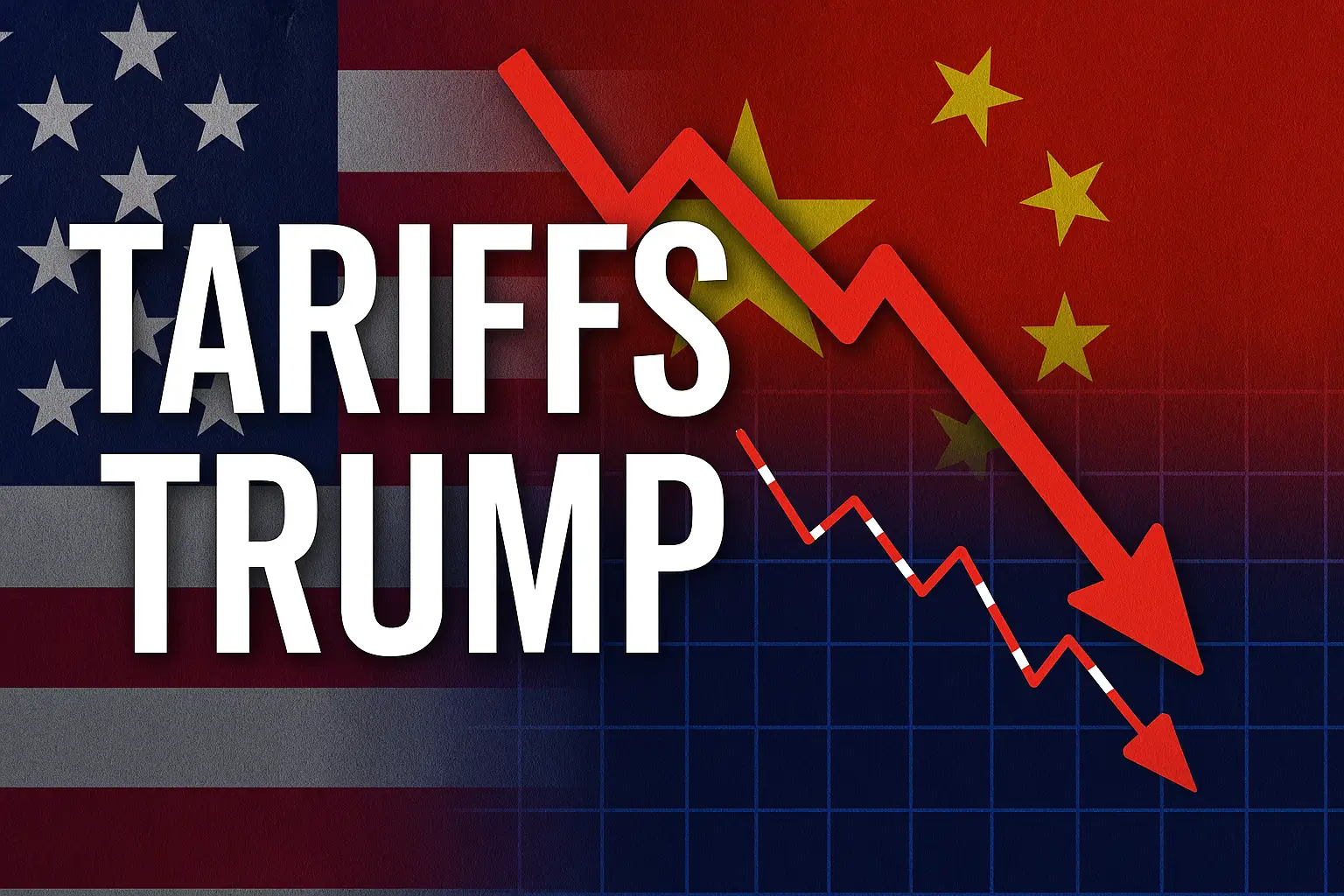President Donald Trump’s new tariff strategy is sending shockwaves through global markets. In early April 2025, the U.S. administration imposed a universal 10% tariff on all imports. In addition, Chinese goods now face up to 54% in duties.
Trump calls it economic self-defence. Markets call it disruption.
🇨🇳 China Responds
China reacted fast. On 10 April, it activated 34% retaliatory tariffs on U.S. products. These countermeasures mark a sharp escalation between the world’s two largest economies. And investors are watching closely.
📉 U.S. Indices Under Pressure
Since their highs in December 2024, U.S. markets have corrected sharply. Here’s how far they’ve fallen:
| Index | Ticker | Dec 2024 High | 5 April 2025 | Drop (%) |
|---|---|---|---|---|
| Nasdaq Comp. | ^IXIC | 20,034 | 15,587 | –22.1% |
| S&P 500 | ^GSPC | 5,881 | 5,074 | –13.7% |
| Dow Jones | ^DJI | 45,014 | 39,548 | –12.1% |
The Nasdaq is officially in a bear market, and the S&P and Dow follow closely. These declines reflect valuation resets and fears of a more considerable systemic impact.
🔻 Pre-Market Signals More Losses
On 7 April 2025, futures trading points to continued heavy losses. Dow futures are down 1,250 points (3.3%). The S&P 500 is set to open 3.7% lower, and Nasdaq futures show a 4.6% drop.
Asian markets opened sharply lower. Japan’s Nikkei fell 8%. Oil prices dropped over 3%, falling below $60 a barrel. Bitcoin also tumbled 5.6%.
This follows a week in which more than $5.4 trillion in market capitalisation was wiped out. Analysts see signs of indiscriminate selling, with investors fearing recession risks linked directly to Trump’s tariffs.
🧭 What Happens Next?
Three potential paths are now emerging:
1. A Broader Trade Conflict
Further tariff escalations may pull in other countries. If Europe or Japan retaliate, the global trade system could fragment. Export-driven sectors will feel the impact first.
2. Global Rebalancing
If the conflict continues, global supply chains may realign. Companies could reduce dependency on U.S.-China flows, and Southeast Asia or Latin America markets may gain strategic importance.
3. Policy Intervention
If market pressure increases, central banks might respond. The U.S. Federal Reserve could loosen monetary policy. Governments may use fiscal tools. But inflation limits their room to manoeuvre.
⚠️ Sensitivity Across Asset Classes
Investors are already seeing stress in key areas:
- Semiconductor producers tied to Asia
- Consumer brands with foreign sourcing
- Industrial metals and energy markets
- FX markets in export-heavy economies
- Global shipping and trade finance
🕊️ A Word on Agility
In moments like these, agility matters more than size. While large institutions may move slowly, independent wealth managers can respond swiftly and flexibly. That ability to act in real-time can make all the difference in volatile conditions.
Disclaimer: This “Tariffs Trump” article is for informational purposes only. It does not constitute investment advice.




